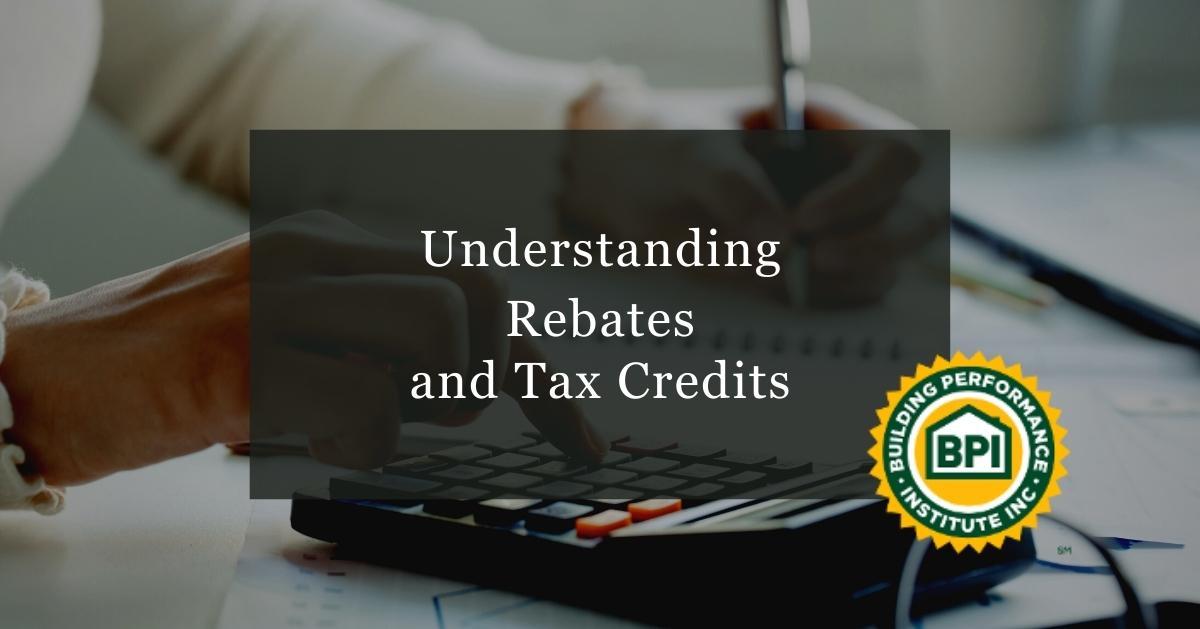Our Blog
Understanding the Difference Between a Rebate and a Tax Credit

There's been a lot of talk recently about the new Inflation Reduction Act. But what does it mean for you and your home?
One of the first things you should know to prepare for the IRA is the difference between a tax credit and a rebate. The IRA contains several of each. Tax credits and rebates work very differently, so let's understand how they differ. In future articles we will discuss the IRA's incentives in more detail.
What is a Rebate?
A rebate is sum of money that is credited or returned to a customer on completion of a transaction. When the government provides a consumer rebate, it uses public funding to help pay for certain goods and services that promote the public benefit. The IRA contains several different kinds of efficiency rebates for homeowners, which we will cover in detail in an upcoming post.
The IRA's consumer rebates are intended to provide discounts to qualified purchasers at the point of sale. Although it sounds complicated (and for states and implementors, it is) accessing IRA rebates will be simple for customers. Customers must choose a participating contractor to do the work. Administration will be handled by the programs and contractors, and homeowners will receive a direct discount on their qualifying purchases.
Each state program sets participation rules for its contractors. Rebates can only come through participating contractors; you cannot get a rebate for DIY work.
Contractors must show they are qualified to do the work and capable of administering their side of the program to be admitted. They must also document that each job has been done correctly. This ensures that you receive high quality work, and also ensures responsible handling of public funds.
What is a Tax Credit?
The IRS says that "tax credits can reduce the amount of tax you owe or increase your tax refund."� They are different from deductions, which reduce your taxable income. Tax credits are a dollar-for-dollar reduction in the amount of tax you owe. It's important to understand that tax credits only offset tax balances due - meaning if you have low income and owe nothing in tax, you get no benefit from a credit.
Tax credits are claimed when you file taxes. The IRS provides forms which you must fill and submit along with documentation of the expense when you file your federal return.
The IRA contains several tax credit provisions. Together, they cover a wide range of home efficiency and clean electrification projects. However, only qualifying expenses can be claimed and supporting documentation must be provided for each, so careful planning and management are necessary. You should be sure to understand what purchases qualify before you begin spending! Unlike a rebate, tax credits do not reduce purchase prices.
What Next?
Each state must decide how to implement the IRA. The law is large and complex, and rolling out its provisions will take some time, so you will see decisions from your state in 2023. In the meantime, we will talk more about the IRA's opportunities for home performance in future posts.
Each of the IRA's efficiency provisions has different guidelines. They target different measures and households of different income categories. Over the coming months we will help you understand which ones might be right for you!
Categories: General

